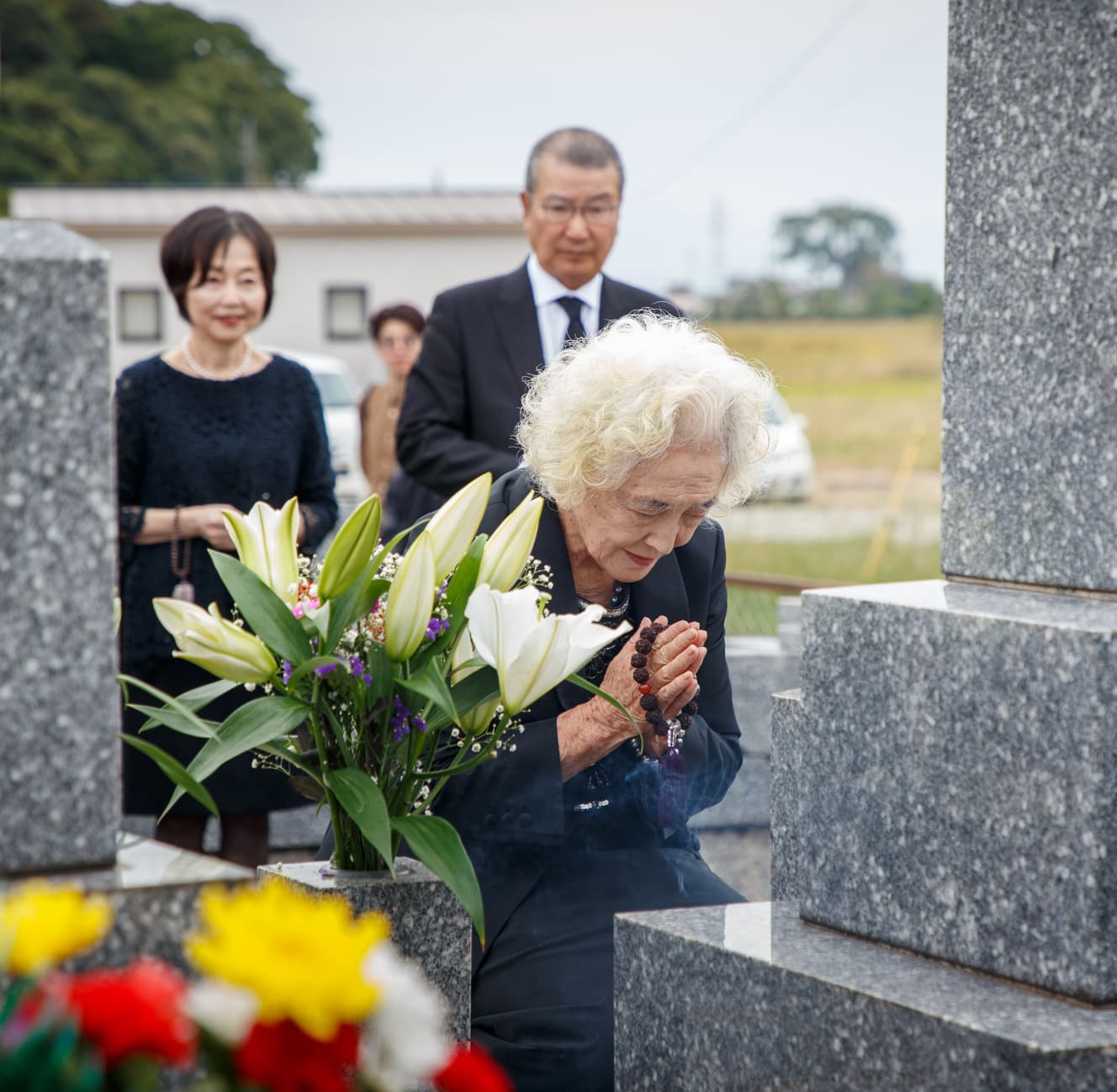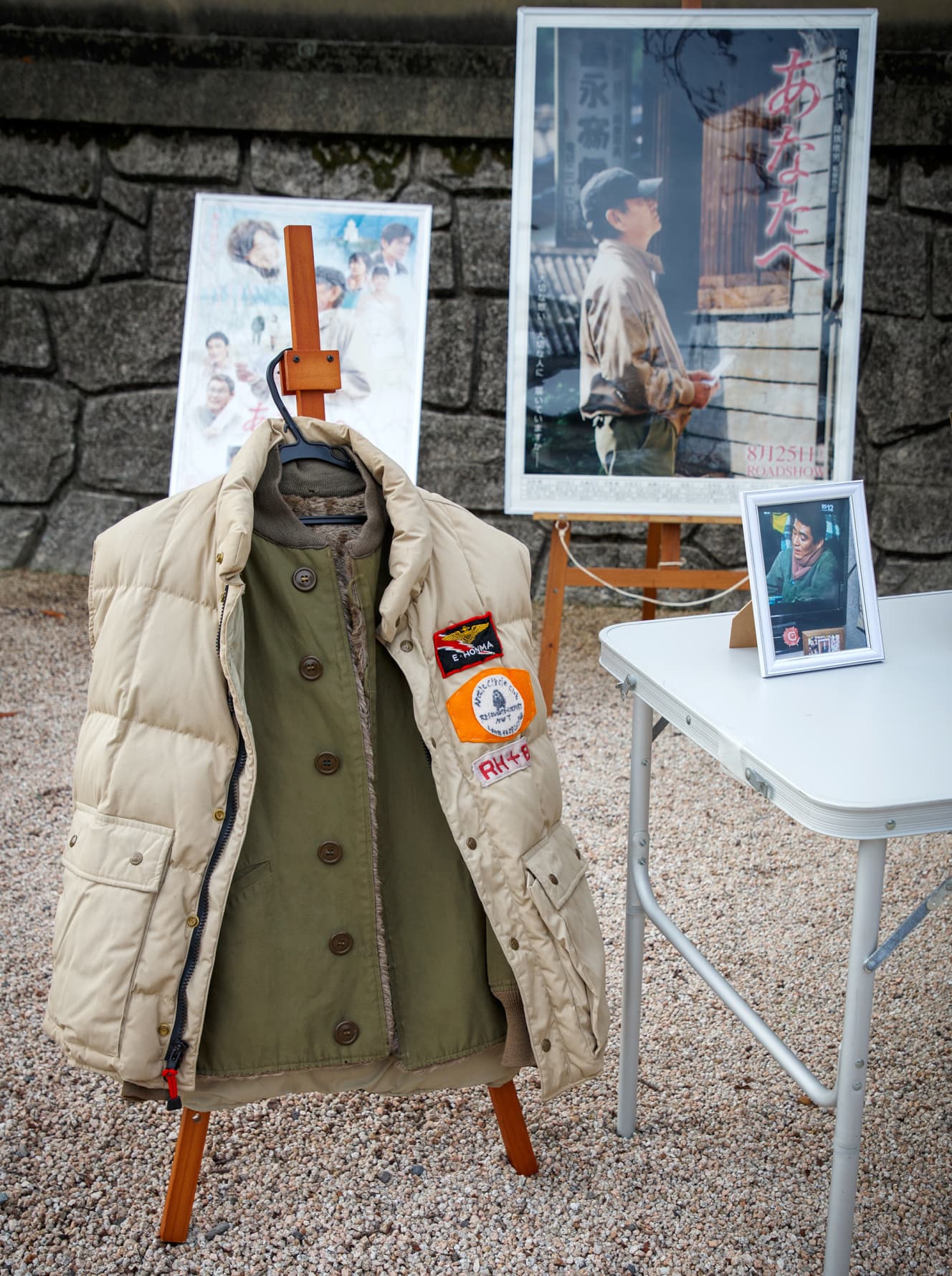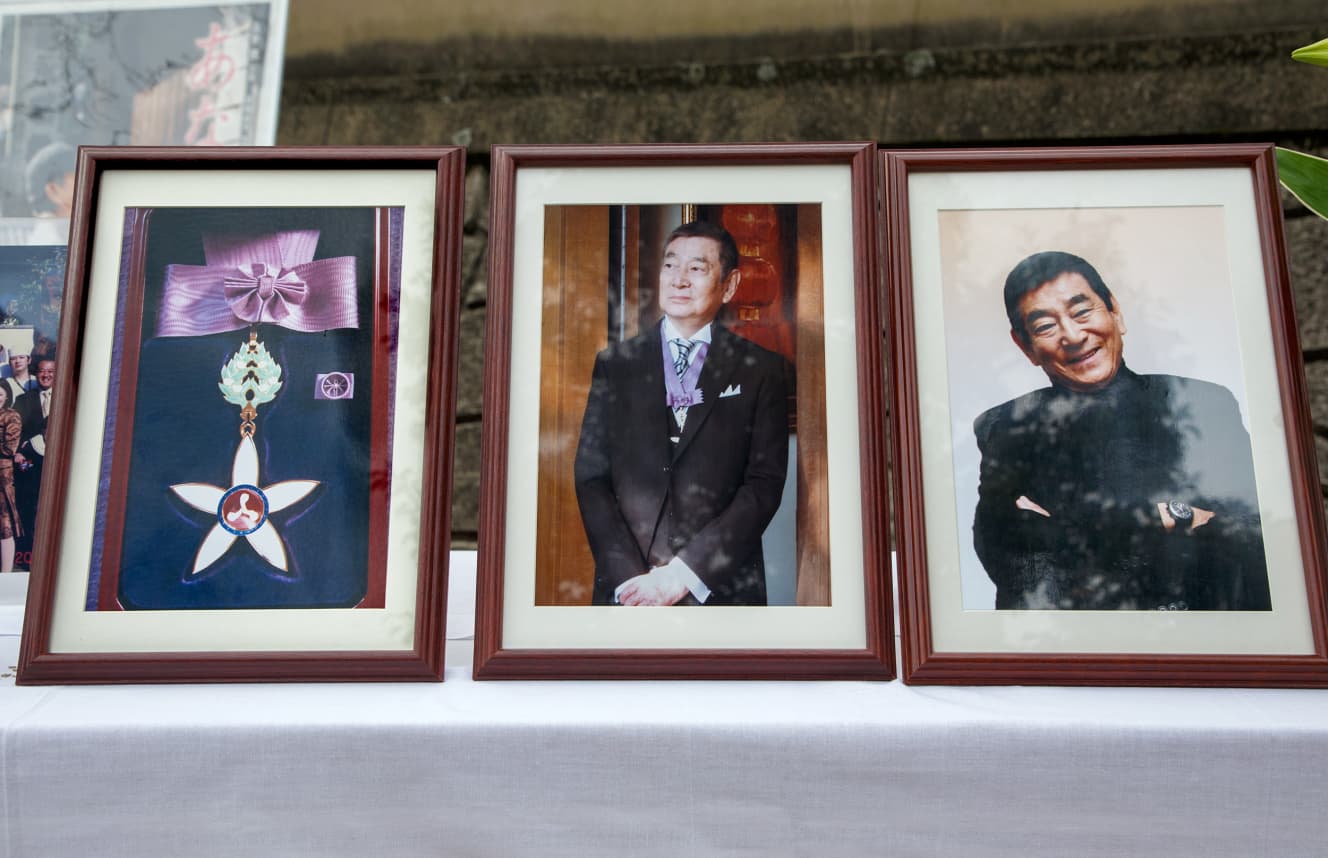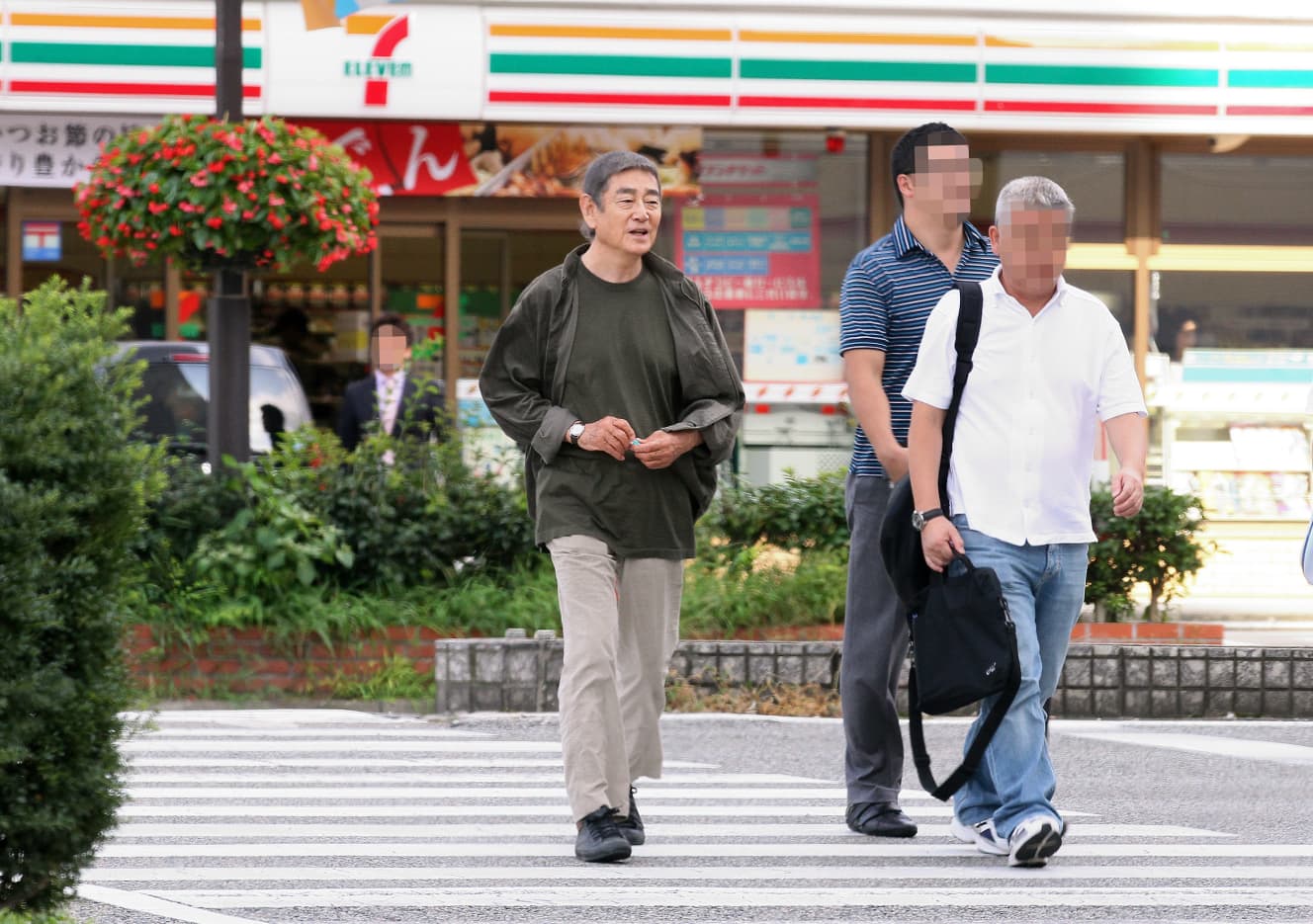10 Years Later: Ken Takakura’s Ashes Return to His Sister in Kitakyushu

The ashes that have returned to the family.
“Finally, it’s back—”
The relatives all speak in unison, letting out a sigh of relief.
It has already been ten years since the passing of Takakura Ken (real name: Oda Takeichi, age 83). On November 10th of this year, a grand “10th Anniversary Memorial Event” was held in his hometown of Nakama City, Fukuoka Prefecture.
First, on the morning of that day, just after 8:30 AM, Mori Toshiko, his real sister, welcomed influential figures from the Japanese film industry, such as Toho President Shimatani Yoshishige and Toei President Tada Noriyuki, to the family temple, Shōkaku-ji, the Oda family’s ancestral Buddhist temple, for the 11th anniversary of his death. Devoted fans had gathered from all over Japan, including from Hokkaido and even China. There is a large family grave in the back cemetery of the temple, and the name of Takakura Ken, also known as Oda Takeichi, is inscribed on the gravestone. Each person offered incense and paid their respects at the Oda family grave. In addition to that grave, there is a grand memorial stone in the temple grounds, inscribed with Takakura’s own handwriting that reads “Kansei.” The visitors moved to this memorial stone to sign the guestbook. Though he was not present, flowers were placed by actor Yoshioka Hidetaka at the memorial, and the guestbook contained the name of Takeshi Kitano.
Takakura Ken’s hometown of Nakama City flourished during the Edo period as a rest stop for the lord of the Kuroda domain during the sankin-kōtai (the compulsory process of alternating residence in the capital). The Oda family operated a currency exchange business. Takakura’s ancestor, Oda Ieko, was a poet from the late Edo period. After the Meiji period, Nakama became part of the Chikuhō coalfields, and Takakura’s father, Oda Toshirō, supervised miners as the head of labor at the Taishō Mining Company in the region. Takakura himself was born as the second son in a family with an older brother and two younger sisters. After graduating from Meiji University, he was scouted by Toei.
The Oda family still resides in the Kitakyushu area of his hometown, including his real sister Toshiko. When they say it’s finally back, they are referring to the remains of Takakura. Typically, remains are buried soon after death, but Takakura’s remains were not with the family for a long time and were not placed in the family temple’s grave. There were complicated reasons for this.
Takakura, who made his debut as a lead actor in the 1956 film Denko Karateuchi and appeared in 205 films, passed away from malignant lymphoma on November 10, 2014, at 3:49 AM, the year after receiving the Order of Culture. It was later revealed that he died while in the midst of preparing for a new film, and his colleagues were left confused and deeply saddened. One of the most affected by the news was his sister, Toshiko, and other family members. His niece, who had spoken with him on the phone just a month before his death, had believed he was in good health. The passing of the nationally beloved actor had not been communicated even to his sister, Toshiko.
The family learned of Takakura’s sudden death two days later, on November 12. His body was secretly cremated at the Yoyohata Funeral Hall in Shibuya, Tokyo, without informing the family. The private funeral was arranged by his adopted daughter, Oda Takashi (60, later changed to Takatsuki), who had been with him at Keio Hospital when he passed away. The Oda family relatives in Kyushu were shocked. When a nephew living in Tokyo first sensed something was wrong, he recalled the following conversation:
“A journalist had asked, ‘How is your uncle?’ in a cryptic way. That made me think, ‘I haven’t heard from him lately,’ so I called his cell phone and his office (Takakura Promotion), but no one answered. Eventually, I reached the former executive of Takakura Promotion, and he told me, ‘He’s at the crematorium right now.’ I was stunned.”
It was understandable that the nephew was confused by the sudden news about the cremation. He continued:
“At that point, I had no idea who was arranging the wake or the temple services. When I asked the former executive, he replied, ‘Well, actually, he has an adopted daughter, and she’s the one handling the cremation. I’ve been completely excluded, and I don’t know any of the details.’ That’s when I first learned of her existence.”
The sudden appearance of the 33-year-younger adopted daughter shocked Takakura’s real sister, Toshiko, and the rest of the family. The existence of the adopted daughter became known to the public around the time of the first-year memorial service. She inherited Takakura’s estate, reportedly worth 4 billion yen, and subsequently severed all contact with the Oda family.
Over the past 10 years, she took strange actions that seemed to erase all traces of Takakura’s life. She demolished the luxurious mansion in Setagaya, Tokyo, where Takakura had once lived with his ex-wife, Eriko Chiemi, and built a new Western-style house on the same property. She scrapped Takakura’s beloved cars, including a Porsche and a Benz, and even dismantled the cruiser that had been moored in Tokyo Bay. The most extreme act was when she destroyed the grave in Kamakura, Kanagawa, that Takakura had built during his lifetime for the memorial of his deceased child with Eriko Chiemi, turning it into an empty lot. As a result, Takakura no longer had a place to be stored, leading them to drift.
Originally, it was said that the majority of Takakura’s ashes were taken by the adopted daughter after his cremation 10 years ago, with the remaining portion divided among the attendees of the private funeral she had arranged. The attendees included Shimatani, the president of Toho, Okada Yuji, the president of Toei, former National Police Agency Commissioner Tanaka Setsuo, Yomiuri Shimbun senior advisor Osakawa Shoichi, film director Furuhata Yasuo, and a secretary from Takakura Promotion – only six people in total.
There was a wad of bills in the inside pocket.
Afterward, the relatives begged the adopted daughter, saying, “We would like to bury the ashes at the family temple, so please at least divide the ashes.” However, the adopted daughter left everything to her lawyer, saying, “It’s fine if you borrow them,” and has not met with the family to this day. She had claimed that she scattered the ashes based on Takakura’s will, but she never showed the will, which she had initially said she had received from Takakura. The relatives were left unsure whether the ashes had actually been scattered.
During this period, on the occasion of the seventh memorial, the head of Toho, Shimadani, returned the ashes to Takakura’s real sister, Toshiko. Then, as the 10th anniversary of his death approached, the ashes, which had been kept by Takakura Promotion’s secretary, were finally returned.
“Many of those who attended the private funeral have passed away, so we can’t ask them. We’re relieved that the ashes that the secretary had are finally back with us,” said one of the nephews.
The 10th anniversary might have been a significant milestone. After the memorial at Shōkakuji, a “Takakura Ken Charity Movie Viewing” was held at the local Nakama Harmony Hall starting at 1 p.m. Nakama Harmony Hall was a place where Takakura had held a talk show during the opening event with former Orix manager Akira Ogi. The 1,000-seat venue was filled with enthusiastic fans. Before the screening of his final film, Anata e, there was a talk event with people from the movie industry who had been considerate of the adopted daughter, who had inherited the rights to many of Takakura Ken’s films. The event was hosted by actress Kaoru Sugita, who had ties to Saga Prefecture, and included Takakura’s real sister Toshiko, Toho president Shimadani, Toei president Tada, and director Daisaku Kimura, who shared memories of Takakura. One of the highlights was Kimura, who took the stage wearing a jacket that Takakura had gifted him, and even revealed the secret about finding a wad of bills in the inside pocket. After the event, Toshiko spoke:
“Actually, some of Chiemi Eri’s relatives were also at the venue. They must have heard about the event. They called me, so I invited them to join us, and three of them came.”
The song “Tennessee Waltz,” a famous tune by Chiemi Eri, played as background music in the venue. Tennessee Waltz was the song that Takakura had first heard during his high school years, and it was the song that made him a fan of Chiemi. He even recorded the song and gave the tape to his sister Toshiko, saying, “Study English with this.”
The climax of the movie Anata e, shown at the peaceful 10th-anniversary event, featured a scene where Takakura scatters the ashes of his wife, played by Yuko Tanaka, in the sea off Hirado Island in Nagasaki. Takakura, aboard a fishing boat with an elderly fisherman played by Hideji Ōtaki, scattered his wife’s pure white ashes into the blue sea. When this scene was shown, the fans in the audience wiped away tears, staring intently at the screen.
Perhaps the adopted daughter saying she scattered Takakura’s ashes was actually a reflection of her mimicking this scene from the movie. This thought briefly crossed my mind. (Respectfully omitted)



 Director Daisaku Kimura also attended the memorial at Shōkakuji. The burial ceremony is expected to be held by the relatives later this year.
Director Daisaku Kimura also attended the memorial at Shōkakuji. The burial ceremony is expected to be held by the relatives later this year.Interview and text by Isao Mori, nonfiction writer: Isao Mori (nonfiction writer) PHOTO: Shinji Hamasaki, Junsei Todoroki (4th photo)